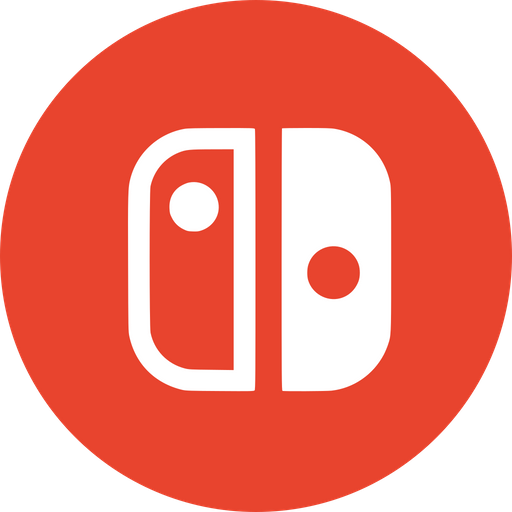

Let me get this straight. Herbivores shouldn’t eat meat‽ Holy crap! this changes everything!
Hi, I’m Infrapink! I used to be @infrapink, but that instance is down. I’m also @infrapink and @infrapink


Let me get this straight. Herbivores shouldn’t eat meat‽ Holy crap! this changes everything!
Depends on how you define social media.
Some people say it refers to any online social interaction platform, including forums, Usenet, IRC, and even email; the logical conclusion of this point of view is that the phone network is social media, and one can make the case that so is the postal service. This definition strikes me as too broad; I feel like it was dreamt up by people who have never known a world without facebook.com and try to force predecessors into a bucket where they don’t belong.
Personally, I would define social media as online communication systems which are account-oriented rather than conversation-oriented. Forums and pre-web communication systems are conversation-oriented. Yes, you have an account on a forum, but the forum is structured around threads. You can get notified of replies to a thread, and you might be able to follow individual threads, but you don’t follow individual accounts. Same with Usenet; there are some workarounds to follow individual people, but the entire network is based around threads. IRC doesn’t even need an account.
Social media is all about accounts; the whole idea is that you follow individual people rather than threads. I would further divide social media into post-based and file-based. Post-based social media is built around text posts. Replies to posts are the same as the post they reply to. Posts can have other media attached, but are still text posts with pictures, videos, or sound files stuck on. This includes MySpace, Facebook, the website formerly known as Twitter, LinkedIn, Tumblr, BlueSky, Mastodon, Sharkey, Akkoma, Friendica, Threads.net, and so forth.
In file-based social media, posts consist of non-text files; responses and replies to posts are not the same as the posts themselves. This is things like YouTube, PeerTube (video), Instagram, Pixelfed (pictures), and Castopod (audio files).
ActivityPub allows post-based and file-based social media to interact with each other. Somebody can post a video with PeerTube, and get replies with Mastodon and Sharkey.
Then there’s what might be called the Slashdot model, which covers Slashdot, Fark, Digg, Reddit, Lemmy, Mbin, Piefed, and Substrings. Reddit is an interesting case of something which was not originally social media, but became social media when the people in charge added the ability to follow individual accounts, and have been trying their darndest to add in more and more features from traditional social media.
And that brings us to the threadiverse. Threadiverse programmes are built on ActivityPub, the same protocol that powers Mastodon, Sharkey, Akkoma, Friendica, PeerTube, and Pixelfed, all of which are social media. You use Lemmy, specifically, lemmy.world, and posted this question to a community on the same instance. Lemmy does not currently allow users to follow individual accounts, and thus under my definition, it does not qualify as social media.
However. I use Mbin, and thus I would refer to @NoStupidQuestions@lemmy.world as a magazine rather than a community. (Actually, I mostly use Mastodon, but I’m posting this with my Mbin account). Mbin does allow users to follow individual accounts; in fact, I follow several Lemmy accounts, and I can directly follow your account as well, right from the web interface. I could also follow your account with my Mastodon account. This means that even if Lemmy fails the definition of social media, it looks and acts just like social media to a bunch of things that do.
So is Lemmy social media? Honestly, yeah, I’d say so. Maybe it isn’t social media to Lemmy users, but it is to most of the rest of the Fediverse.
![A screenshot of TheBrainBin.org, an Mbin instance. Specifically, it's a post in the magazine NoStupidQuestions@lemmy.world, asking "Is This Social Media", posted by @Proprietary_Blend@lemmy.world. The user has moused over OP's username, which has brought up a popup. The popup shows various information and options. Most pertinently to this discussion, there is a [Follow] button, which allows the person viewing the popup to directly follow Proprietary_Blend.](https://media.thebrainbin.org/69/f8/69f817617450be1a7878e7991537a53085d9c6917334bd04efac1876f1aa094f.png)


And the only time I ever got interviewed was when I was unemployed (TV3 was doing a news report on unemployment, and I happened to be queueing for my monthly sign-on).


Whenever I apply for a job, I just get a whole lot of resilience. How can be get less resilience?


I did pay for it, and you are correct. It’s decent for what it is, but it should really have been a pack-in game.


And Wii Sports wasn’t even really free with the Wii! The added the price of Wii Sports to that of the Wii, but because every Wii came with Wii Sports, nobody noticed.


Fortran.
No I’m not joking.
But they’re perfectly formed.
You’re right about… uh… wait, what was I talking about?
Yes, it’s fine and it works perfectly well, but it can be better.
Let’s refactor it into metal and rubber instead of wood, put an air-filled tube between the inner and outer layers. That will result in dramatically less wear and tear while also smoothing out bumps, thus making for a more comfortable ride.
I genuinely regularly forget that other people consider mayonnaise to be food. The result is that people ask me if there is anything I don’t eat, I tell them the real foods I don’t like, and then they serve me something with mayonnaise in it, and I’m surprised and confused why they would do that before I realise that to normies, this is acceptable.


The whole point of the Internet has always been to spread memes.
Because the Internet is a communication medium, and communication is made of memes. I’m not joking. Words, language, music, and art are all memes. (The concept of memes is also a meme). Before the Internet, there was ARPAnet, email, IRC, and BBS boards; all about communication, and thus memes.
Before that, there was the phone network. Before that, the post office. Before that, books, pamphlets, and people telling stories down the pub or around the campfire. All memes.
In fact, this very post is made of memes. The previous sentence contains at least nine memes – the words In, fact, this, very, post, is, made, of, and memes. But there are more memes in there. The phrase in fact combines the words in and fact to make a new meme – in this case, when those two words combine, it asserts more forcefully that the overall statement is true. There’s also the spaces between the words, which makes reading the sentence much easier. Yes, believe it or not, spaces between words is a meme. Before the 8th century AD, WORDSWEREWRITTENINALLCAPSWITHNOSPACESBETWEENTHEM. Alcuin of York, a scribe and poet at the court of Emperor Charlemagne, came up with the ideas of lowercase letters and spaces between words to make reading easier, and his ideas were so popular that they spread across most of Christendom. Those memes were so successful that people think of them as natural and obvious parts of (alphabetic) writing, but they aren’t. They aren’t even a millennium old.
Writing is another meme, going way back to the Stone Age, and it has evolved and developed into numerous other memes, such as the Roman alphabet (which I am using right now), Arabic script, Chinese characters, the Cyrillic alphabet, Brahmic script, Ge’ez alphabet, the Greek alphabet, Cherokee script, Egyptian hieroglyphics, and many others.
Asking for social media without memes is like asking for food without proteins, fats, or carbohydrates. It’s like asking for sunlight without electromagnetic radiation.


“Whites” today now comprise literally every fair skinned ethnic background that isn’t east Asian. I shit you not, I think Hispanics who are fair skinned will be the next group subsumed into the white category
Funny story. Before the 1980s, Hispanic people were considered white. (Modern people praise I Love Lucy for including an “interracial” marriage, but people in the 1950s just saw a white couple). But since Hispanic people in America tend to be a bit culturally distinct from the ruling class, other white people wanted to be racist against them, and so the meme arose and spread that people of Spanish and Portuguese descent are a race distinct from all other people of European descent.


RTÉ, because it’s a legal requirement if I own a television.


There’s more to it than that.
Nintendo have spent decades meticulously building up a powerful brand image. As such, there are people who are fans of Nintendo the company/brand to an extent you don’t see with Sony or Microsoft; other company’s individual games have fans, but you don’t get Microsoft Fans or XBox Fans so much as Halo Fans. This means Nintendo’s games and hardware reïnforce each other; someone who bought a Switch for Mario and Zelda is the sort of person who thinks “Ooh, Fire Emblem!” and buys that, too.
Plus, if you’ve gone to the trouble of buying a Nintendo console for one or two games, there is a psychological urge to justify your choice, to make it worth your while. So if you just got it for Mario and Zelda, well then you’ve spent hundreds of euros on a machine to play two games. But if you also get Fire Emblem, that’s three games. Kirby brings it up to four. Thus, every exclusive makes the console purchase feel more reasonable.
Then there are sales breakdowns. Nintendo gets 100% of the non-tax price of every one of their own games. To give a concrete example, Donkey Kong Bananza costs €69.99. Nintendo get €56.90 of that (€69.99 less 23% VAT). If they sell it elsewhere, they lose another 30% of the non-tax price in store fees. Thus, if they were to bring Donkey Kong Bananza to Steam, they would only get €39.83 per copy (€56.90 × 0.7). They would thus need to sell 1.43 times as many copies on Steam to make the same money as selling them on the eShop.
That’s the big thing right there. Some people for sure decide to go without Nintendo games if they aren’t on other platforms. A subset of those people would be willing to buy Nintendo games on other platforms. But is that cohort at least 43% the size of the cohort who just buy a Nintendo console?
But, of course, Nintendo don’t just sell their games on the eShop. There are also tons of third-party games, each of which pay 30% of their non-tax price per purchase. If somebody has a Nintendo console, even if those third-party games are on Steam and PlayStation, they might buy those games on the Switch instead. (Source: I have done this. If you own a Switch, so have you). That’s another chunk of money Nintendo would lose out on if they weren’t selling consoles.
In conclusion, for third-party developers, being multi-platform is good. But for Nintendo, a first-party developer, keeping their games exclusive is the logical choice.
I use it to follow several ladies who post to multiple communities on lemmynsfw.com.